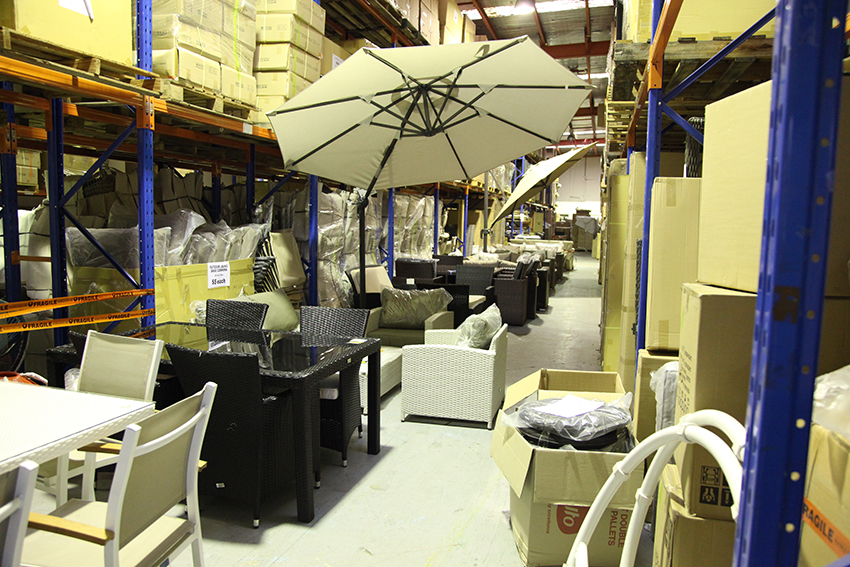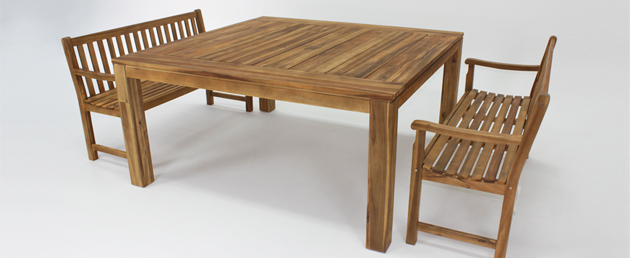
Maintaining timber outdoor furniture
If possible store your timber outdoor furniture inside during periods when it is not being used. This will prolong the life of your furniture and reduce the necessity for treatment of the timber. Moisture is the other enemy of timber furniture, causing it to rot and warp. If possible keep the furniture off damp surfaces like grass and soil, and when cleaning your outdoor area it is wise to remove the furniture first. Proximity to soil can also attract termites and other pests that can quickly destroy the timber.
Cleaning and Oiling
Periodically clean your timber outdoor furniture using warm soapy water and a gentle brush. After cleaning, and once it is dry, treat the timber with a natural oil such as linseed (widely available from supermarkets and health food shops) or a commercially available solvent-based product designed specifically for the treatment of outdoor furniture. These products usually include a tint to keep the timber dark, and a UV inhibitor to slow down solar degradation of the timber surface. This process should be carried out either 6-monthly or annually. Apply the oil, leave for a few hours, wipe off any excess, then repeat the process.
Deep Cleaning
To remove stains and mildew, mix hot water with a powdered oxygen bleach, following the manufacturer’s directions. Scrub the area with a soft-bristle brush, then rinse.
To remove rust stains or bird droppings, or to restore timber’s original colour, sand lightly along the grain using fine-grit sandpaper, then rinse. Alternatively, mix hot water with oxalic acid crystals (also called wood bleach or wood brightener) according to directions, and apply this solution with a soft-bristle brush, then rinse. Don’t use chlorine bleach – it can damage wood fibres.
Sealing
Sealing of protects timber from UV radiation, dirt, and moisture. It can also preserve the restored colour of the timber.
First clean all surfaces and sand off any existing finishes, then apply a clear water-repellent preservative or a penetrating semitransparent stain (the stain’s pigment protects the timber from the sun). Consult manufacturer’s instructions on how often to reapply – generally timber outdoor furniture should be sealed every 1 to 3 years.
If you need further advice about maintaining your timber outdoor furniture please visit www.outdoorlivingdirect.com.au





